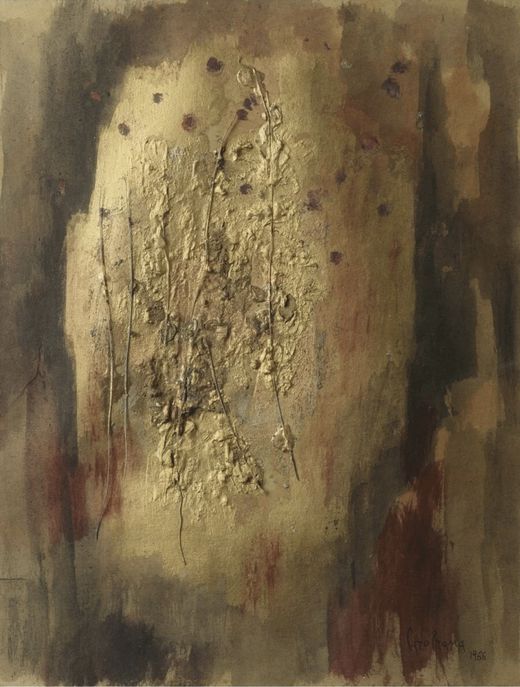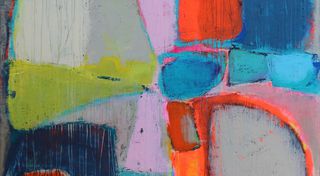

Biography
Carol Rama was born in Turin in April 1918 and lived a difficult and tormented childhood due to the Second World War, the premature and tragic death of her father Amante and the psychiatric illness that this event generated in her mother Marta Pugliaro.
Her first contact with painting occurred when, as a child, she worked as a model for the painter Gemma Vercelli who occupied an atelier in the same street as her father's factory. In that studio the world of colors and signs irremediably inspires Rama, and in there she apprehends the rudiments of drawing and painting.
At just eighteen years old, she painted the painting "Nonna Carolina", now preserved at the GAM - Civic Gallery of Modern and Contemporary Art in Turin. That first watercolor was followed by many others characterized by dense chromatic pastes. The subjects, especially in the watercolors, are particular and often recall characters, situations and objects that have a real counterpart in Rama's life, many of them featuring explicit sexual connotations. Carol Rama represents in her watercolors naked women, amputees, in wheelchairs and full of a strong and perverse eroticism. Subjects accompanied by animals, prostheses and anatomical parts of the body such as phalluses, feet and tongues then became the object of a scabrous and unacceptable attraction for his time, so much so that they were banned in 1945 on the occasion of his first solo exhibition .
Precisely around those same years, Carol Rama approached the current of abstractionism represented in Italy by the MAC Concrete Art Movement and exhibited her works at the Venice Biennale between 1948 and 1950. Perhaps her best-known works arrived shortly after, which her friend Edoardo Sanguineti will define as Bricolage: multi-material projects in which informal stains are combined with teeth, nails and glass eyes. A provocative sensitivity, this, which will be carried forward throughout her life thanks above all to the support of friends - artists and otherwise - met in Italy and during her stays in Paris and New York.
However, it was the meeting with one of the most important art critics of the moment, Lea Vergine, that gave her definitive consecration. In 1980, in fact, her first works were included in the exhibition "The other half of the avant-garde" which brought together the greatest female artists of the 20th century. Five years later, again thanks to Lea, she exhibited in the churchyard of the Milan Cathedral in a solo show that reconstructed her entire career. It is precisely the initial works, the watercolors, that have the greatest success and push her to return to this technique to give life to less abstract and more real representations: she therefore represents more classic subjects for her, taken from her personal life story, but without giving up the multi-materiality which, over time, has also become a stylistic feature. The figures, in fact, stand out on unusual support surfaces such as already used sheets, cadastral maps or technical drawings.
During the 1990s Carol Rama received important public recognition and in 2003, the artist received the Golden Lion for Lifetime Achievement, a prestigious award awarded to her at the Venice Biennale of that year, directed by Francesco Bonami.
Carol Rama passed away on September 24, 2015 in her house museum in Turin, where she lived continuously since the 1940s. Her last known work dates back to 2007 and closes an intense career that lasted over seventy years.
Nationality




